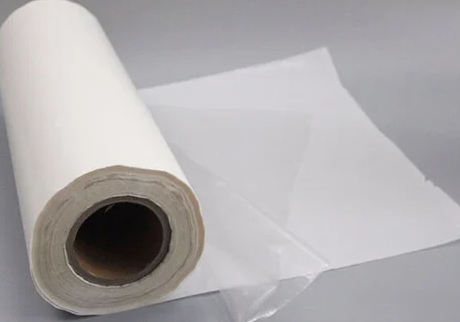The activation process of Copa Hot Melt Adhesive Web is essential for unlocking its adhesive properties and creating a strong bond between materials. This can only be done by heating the adhesive to its melting point. The only way to accomplish this is to heat the adhesive until it reaches its melting point. The ability of the adhesive to change into a liquid at higher temperatures makes it possible to carry out this procedure. This facet of the product's development was given careful thought, and it was taken into account as a result of those considerations. These applicators each include a heated nozzle or chamber that is responsible for liquefying the adhesive web and bringing it to a state in which it can be applied. This process is called "pre-heating."
The manufacturer of copa hot melt adhesive web provides a specific recommended temperature range for the melting temperature of each variety of Copa Hot Melt Adhesive Web. This temperature range corresponds to the melting temperature of the product. It is specified that the melting temperature of the copa hot melt adhesive web falls somewhere within this temperature range. After completing step 1, proceed on to the next stage of the process, which is referred to as controlled dispensing. Using this adhesive, you can stick together anything you want to stick together. The user is able to exert control over the quantity of adhesive that is expelled from the device thanks to this feature. Because the adhesive forms robust molecular bonds with the surfaces it adheres to as it solidifies, the bond it creates is not only long-lasting but also dependable. This is made possible by the fact that it lasts as long as it does. Because of this, the connection that it forges is one that is not only enduring but also reliable. Because of this, the typical amount of setting time is very brief. This is due to the speed with which it forms bonds and sets after being applied to the surface.

The precise amount of time that is necessary for the adhesive to harden can vary depending on a variety of different factors. Some of these factors include the thickness of the adhesive, the temperature in the environment that the adhesive is being applied to, as well as the materials that are being bonded together. Once something has cooled down and changed into a solid state, it is not designed to be easily removed or moved to a different location in the vast majority of instances. This is because of the nature of the change. If you try to disassemble bonded materials or rearrange them in any way, you run the risk of weakening the connection between the materials or even completely breaking the bond. This risk increases the more you try to disassemble or rearrange the bonded materials. Because of this property, one can be confident that the bonded assembly will keep its stability and integrity uncompromised in the absence of any compromise.
In the event that repositioning or removal is required, it is possible that preparatory work, such as the application of heat, will be required in order to soften and weaken the bond. In this case, the heat will be applied in order to accomplish these goals.
Before beginning the process of bonding, it is essential to take into account the irreversible nature of the Copa Hot Melt Adhesive Web. This must be done before the process can even begin. Before we can even start the process, this step has to be completed. This step needs to be finished before we can even begin the process we're trying to start. The most effective way to achieve this objective is to test the adhesive on a spot that will not be visible to anyone. Before moving on to the next step, which involves applying the adhesive, this one has to be finished first. This is because the adhesive melts at a higher temperature than the majority of other types of adhesives, which is one of the reasons why it is used less frequently.
After the copa hot melt adhesive web has been applied and heated up to the point where it melts, it will start to cool down and solidify in a reasonable amount of time. This process will continue until the adhesive has reached the desired consistency. When it has been heated to the point where it melts, this result is what can be expected to take place.
The variables that were mentioned earlier in this paragraph play a role in determining, to some extent, both the rate at which the adhesive will set and the rate at which it will reach its maximum strength. On the other hand, the process of becoming solid will proceed at a quicker rate if you use a thinner application or if the temperature is increased. Both of these factors can affect the rate at which the procedure advances. This can be accomplished by waiting an adequate amount of time before proceeding. Even though the bond may become moderately strong not too long after it has been applied, it is recommended that you wait until the adhesive has completely cooled down and set before subjecting it to any kind of load or stress. This is because waiting until the adhesive has completely cooled down and set can take quite some time. Waiting until the adhesive has completely cooled down and solidified can take a significant amount of time, which is the reason why this is the case. Consult the manufacturer's guidelines if you do not have any specific time requirements or if you need to determine the setting time for your particular application in order to accomplish your goals.



